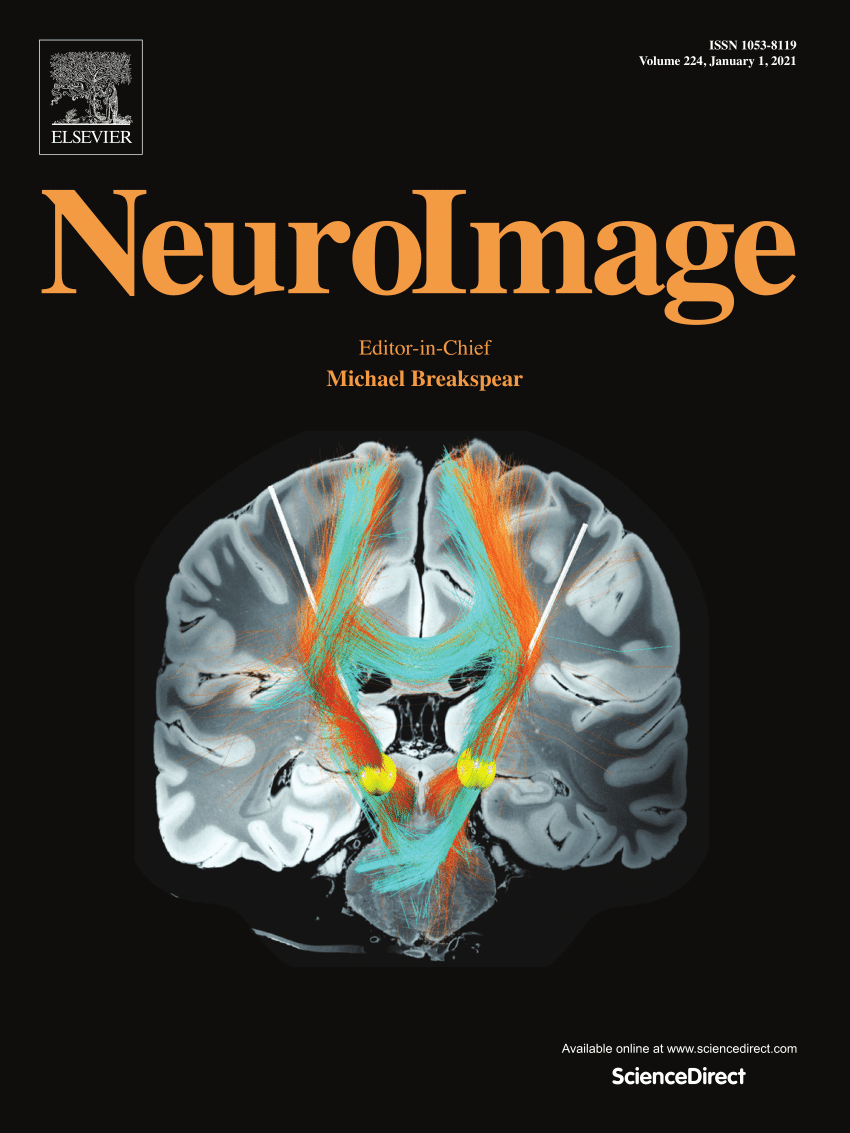颞中回在慢性疼痛患者疼痛反刍中的潜在作用。
IF 4.7
2区 医学
Q1 NEUROIMAGING
引用次数: 0
摘要
感知疼痛的抵消是必不可少的,从伤害感觉的任何后遗症中解脱出来。由于慢性疼痛患者表现出疼痛的时间对比受损,我们测试了他们在伤害性刺激结束后对疼痛抵消的感知是否比健康对照者更慢。我们使用功能性磁共振成像(fMRI)寻找疼痛抵消和后遗症的大脑相关因素。在19例慢性疼痛患者和15例健康对照者中,我们使用peltier型热刺激器在左前臂掌侧施加10块疼痛刺激,并通过视觉模拟量表(VAS)连续记录疼痛强度,同时进行全脑功能磁共振成像(fMRI)。我们测量了刺激抵消后达到“无痛”的潜伏期(VAS结束潜伏期)。我们分析疼痛停止时功能磁共振成像信号的变化,并进行组间比较。寻求个体参数与疼痛灾难化量表的反刍得分的相关性。与无痛对照组相比,患者的VAS结束潜伏期更长,疼痛后左侧颞中回、右侧顶叶小叶以及小体积校正后右侧背外侧前额叶皮层的活动更大。VAS结束潜伏期和疼痛后活动均与反刍评分呈正相关。心理生理相互作用分析表明,反刍得分较高的患者与反刍得分较高的无痛受试者的颞叶和前额叶皮层之间的耦合较弱。我们认为颞中回可能在疼痛后效和反刍中起调节作用,并通过前额叶-颞叶网络对其进行调节。本文章由计算机程序翻译,如有差异,请以英文原文为准。
A potential role for the middle temporal gyrus in mediating pain rumination in patients with chronic pain
Perception of pain offset is essential to free one from any aftereffects of nociception. Because patients with chronic pain show impaired temporal contrast of pain, we tested whether they show slower perception of pain offset after the end of a nociceptive stimulus compared with pain-free subjects. We sought for cerebral correlates for offset and aftereffects of pain using functional magnetic resonance imaging (fMRI). In 19 patients with chronic pain and 15 pain-free subjects, we gave 10 blocks of pain stimuli by a Peltier-type thermal stimulator on the left volar forearm and recorded pain intensity continuously by a visual analogue scale (VAS), while performing whole-brain fMRI. We measured latency to reach “no pain” after stimulus offset (VAS End Latency). We analyzed fMRI signal changes during cessation of pain and made a between-group comparison. Individual parameters were sought for correlations with the rumination score from the Pain Catastrophizing Scale. Patients showed a longer VAS End Latency, and a larger after-pain activity in the left middle temporal gyrus, the right parietal lobule and, after small-volume correction, the right dorsolateral prefrontal cortex than pain-free subjects. Both VAS End Latency and after-pain activity were positively correlated with the rumination score. Psychophysiological interaction analysis revealed that higher rumination scores were associated with weaker coupling between the middle temporal and prefrontal cortices in patients and pain-free subjects with positive rumination scores. We suggest a possible role for the middle temporal gyrus in mediating pain aftereffects and rumination, and its modulation by the prefrontal-temporal network.
求助全文
通过发布文献求助,成功后即可免费获取论文全文。
去求助
来源期刊

NeuroImage
医学-核医学
CiteScore
11.30
自引率
10.50%
发文量
809
审稿时长
63 days
期刊介绍:
NeuroImage, a Journal of Brain Function provides a vehicle for communicating important advances in acquiring, analyzing, and modelling neuroimaging data and in applying these techniques to the study of structure-function and brain-behavior relationships. Though the emphasis is on the macroscopic level of human brain organization, meso-and microscopic neuroimaging across all species will be considered if informative for understanding the aforementioned relationships.
 求助内容:
求助内容: 应助结果提醒方式:
应助结果提醒方式:


